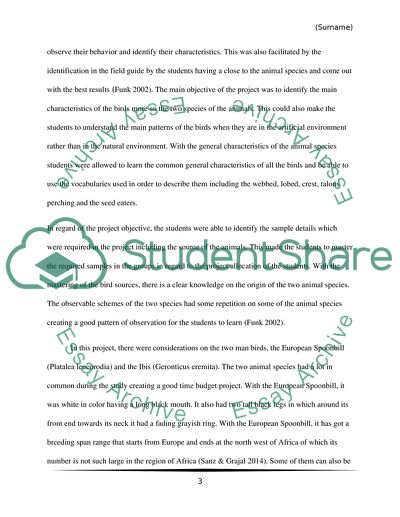Cite this document
(Spoonbill and Ibis in Zoo Environment Research Paper, n.d.)
Spoonbill and Ibis in Zoo Environment Research Paper. Retrieved from https://studentshare.org/environmental-studies/1835401-time-budget-preference-of-the-species-spoonbill-platalea-leucorodia-and-ibis-geronticus-eremita-in-a-control-artificialnot-natural-zoo-environment
Spoonbill and Ibis in Zoo Environment Research Paper. Retrieved from https://studentshare.org/environmental-studies/1835401-time-budget-preference-of-the-species-spoonbill-platalea-leucorodia-and-ibis-geronticus-eremita-in-a-control-artificialnot-natural-zoo-environment
(Spoonbill and Ibis in Zoo Environment Research Paper)
Spoonbill and Ibis in Zoo Environment Research Paper. https://studentshare.org/environmental-studies/1835401-time-budget-preference-of-the-species-spoonbill-platalea-leucorodia-and-ibis-geronticus-eremita-in-a-control-artificialnot-natural-zoo-environment.
Spoonbill and Ibis in Zoo Environment Research Paper. https://studentshare.org/environmental-studies/1835401-time-budget-preference-of-the-species-spoonbill-platalea-leucorodia-and-ibis-geronticus-eremita-in-a-control-artificialnot-natural-zoo-environment.
“Spoonbill and Ibis in Zoo Environment Research Paper”, n.d. https://studentshare.org/environmental-studies/1835401-time-budget-preference-of-the-species-spoonbill-platalea-leucorodia-and-ibis-geronticus-eremita-in-a-control-artificialnot-natural-zoo-environment.


